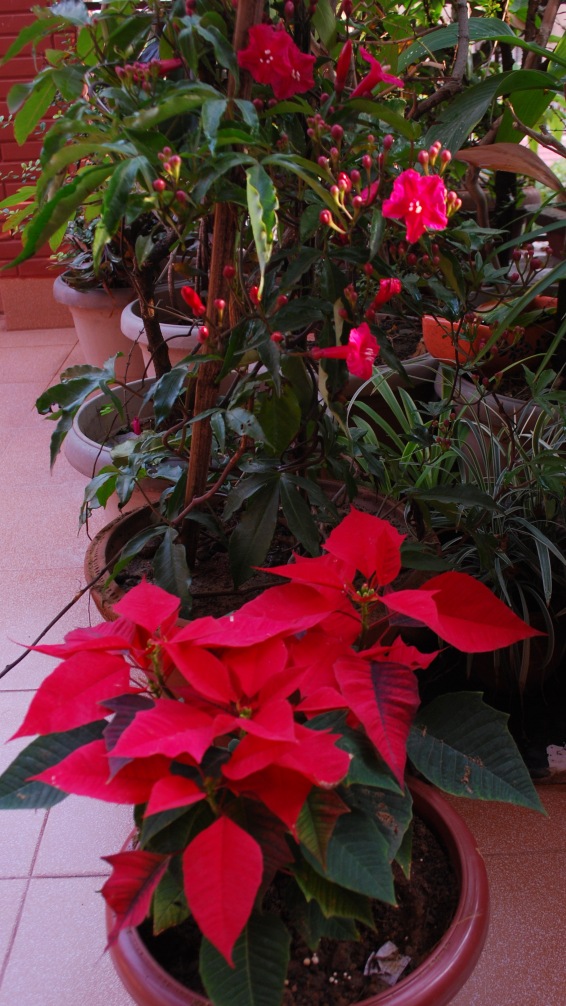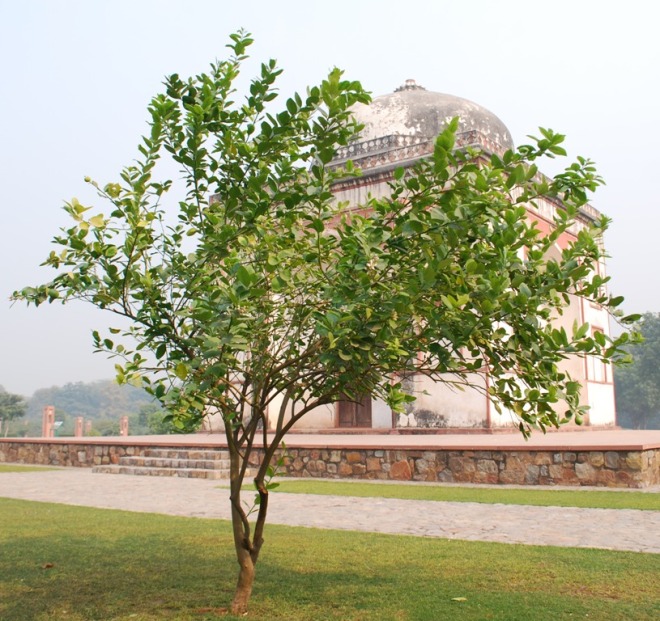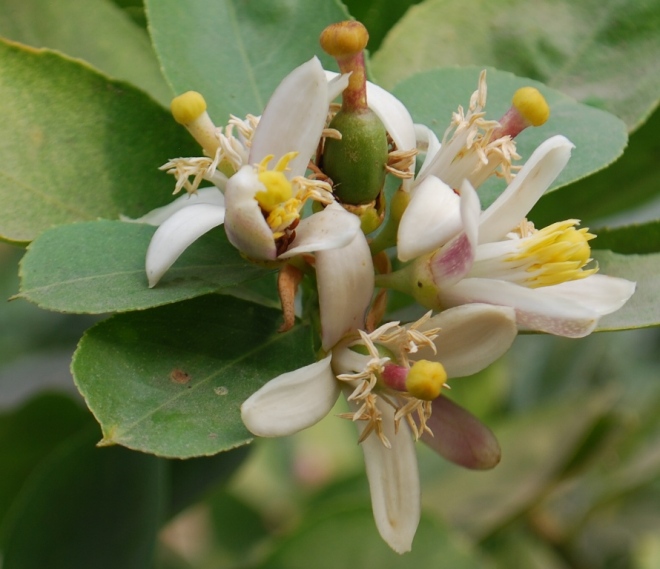Diwali or The Festival of Lights is a festival of Love, Joy & Sharing. Darkness is dispelled as Light enters every corner of our being, dispelling all negativity.
For many readers who are not aware of this Indian Festival, it is similar to Christmas or the Chinese New Year and accompanied with a lot of Lights, Gifts and Delicious Food.
As a departure from the years gone by we celebrated it with “Flowers” and Lit up our home with potted flowers.( all the Marigolds or Gaindas were potted and we avoided using cut flowers)
The terrace garden attached to the living room at home has two new floral members in Red this Diwali.

Poinsettia ( Scientific name is Euphorbia pulcherrima ) in the picture above is associated with Christmas Decorations and adds colour to our Home in New Delhi, India this Diwali alongwith the traditional Marigolds.(do read up previous blogs “AUSPICIOUS MARIGOLDS“ & “GOLDEN FIELDS“ to see as to how they were so called)
What I did not know is that their milky sap contains deadly toxic esters , so if you have pets ensure they keep away from the Stunning but deadly Poinsettias.( an earlier blog titled “Euphor(b)ia” showcases a very dissimilar family member )

It is Diwali Morning and I was might pleased to see these lovely Crimson flowers with Ivy like leaves being checked out by Sunbirds ( you can see them in a post written almost a year ago titled ECLIPSED) under the gaze of the Morning Sun.
I rushed to get my camera but by then the Sunbird had gone yet the Lens captured the Morning Dew on the flowers ( see the featured image) along with the Buds which were bursting to transform into Crimson beauties.( picture below) .
“The Cardinal creeper or Lady Doorlys Morning Glory (English) , Ipomea horsfalliae ( Scientific name) is a spectacular creeper covered with Splendid Tubular Crimson Flowers and traces it’s origins to Brazil.”

The Crimson flowers are yet to be identified by me but am sure my enlightened readers will help me as more Flowers Bloom and Light up the Festival of Diwali.
“After sweating it out have now finally identified the plant . This most beautiful and relatively rare creeper belongs to the family Convolvulaceae.( many previous blogs have covered other members of this family) The leaves resemble those of the Chinar or Maple tree and are a lovely Olive Green which offsets the splendid Crimson colour of the Cardinal creeper.”
I hope, by the time Diwali re-arrives next year, the Crimson creeper would have covered a major part of the terrace wall.
Happy Diwali and May the times to come bring Joy & Happiness to one and all.








































